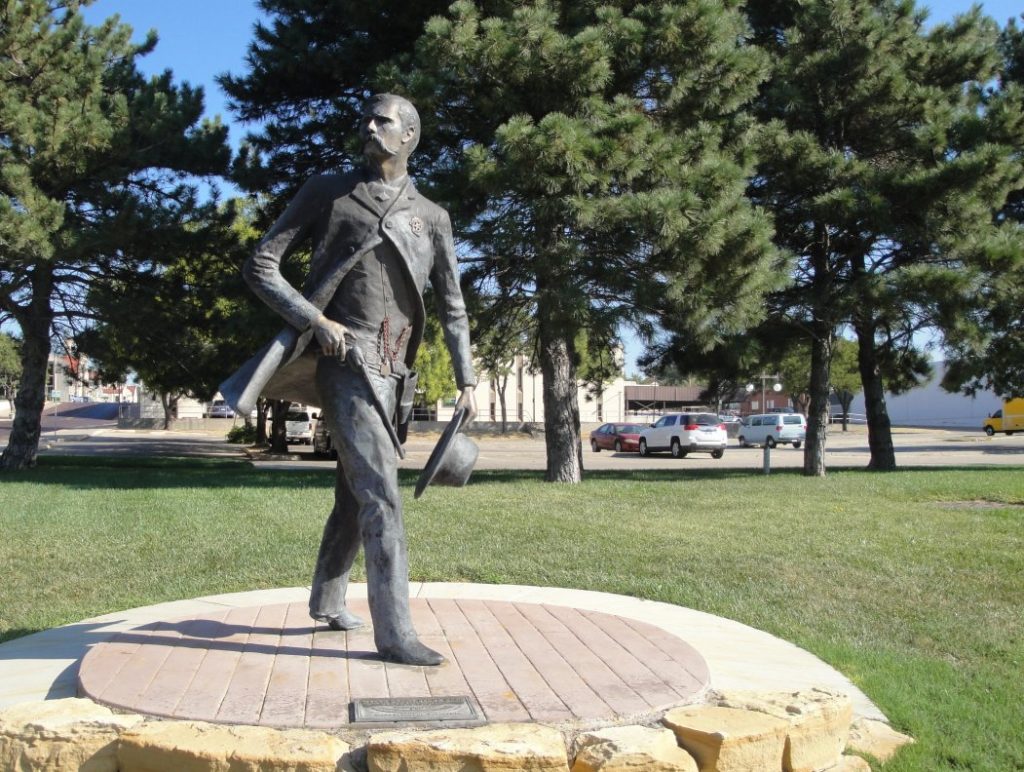
Dodge City makes a much bigger impression on American folklore than it does on American geography. Above is Wyatt Earp, one of the town’s most famous marshals. Others included Bat Masterson & Charlie Basset. There really isn’t much here anymore really of theirs. But I wanted to stop anyway. I am beguiled by the legend. Below is what is left of the “real Dodge.” The parking lot occupies the space where all the taverns and whore houses used to be. The real Dodge of the old west was probably flimsier and less permanent than the movie sets made to portray it. They were always worried about it burning down and the good citizens of the city finally got rid of what they considered an eye-sore that attracted the wrong sort.
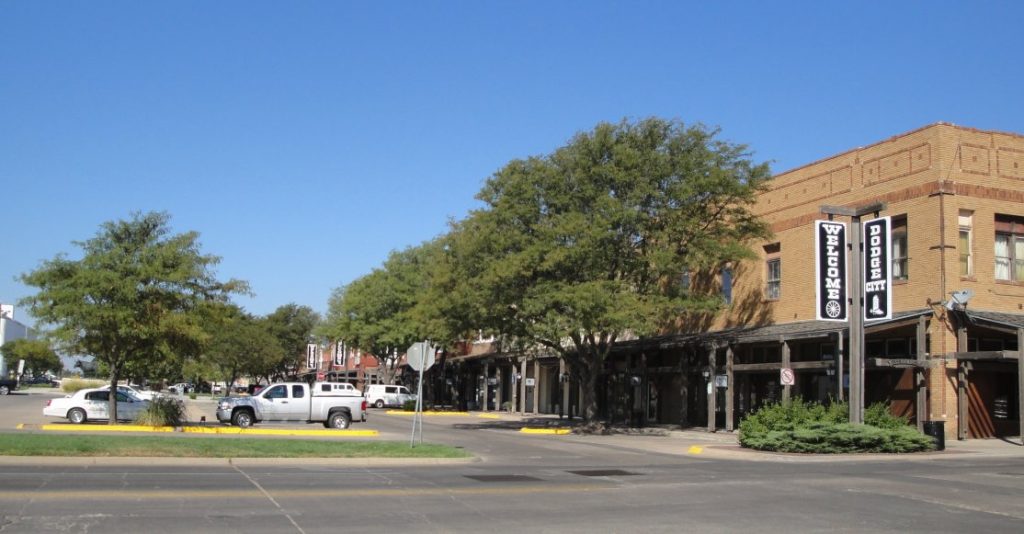
So many of our Westerns are set in Dodge. I grew up watching Gun smoke with James Arness as Marshal Matt Dillon. Each episode started off with Matt winning a gunfight in the streets of Dodge. Westerns were popular when I was a kid. You wonder why any bad guys would ever show up in Dodge with Matt Dillon around. He gunned down a couple of them every week. I wonder what the cumulative total was.
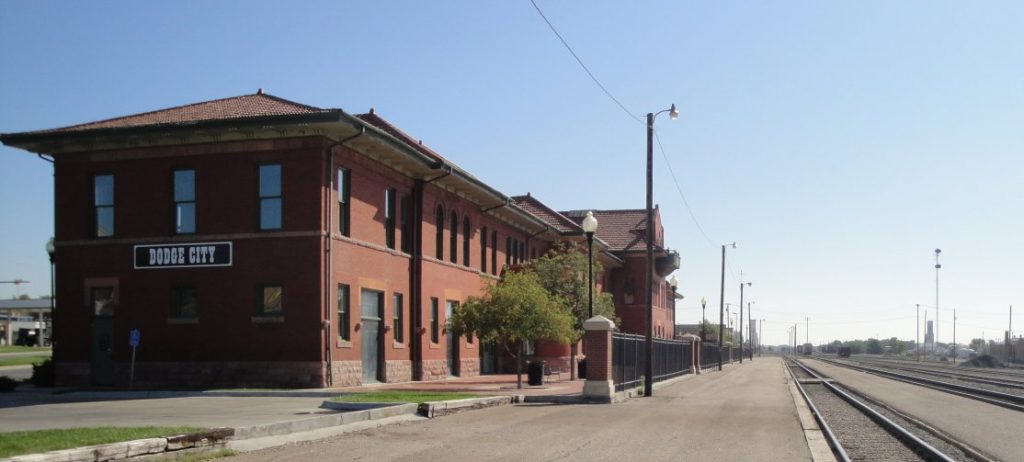
Cumulatively, I bet there are more total hours of TV and movie time about the Wild West than there was during the actual Wild West period. Dodge City was at the end of a branch of the old Chisholm Trail. It was where the big herds from Texas met the Railroad. You can see the rail depot and tracks above and the longhorn below.
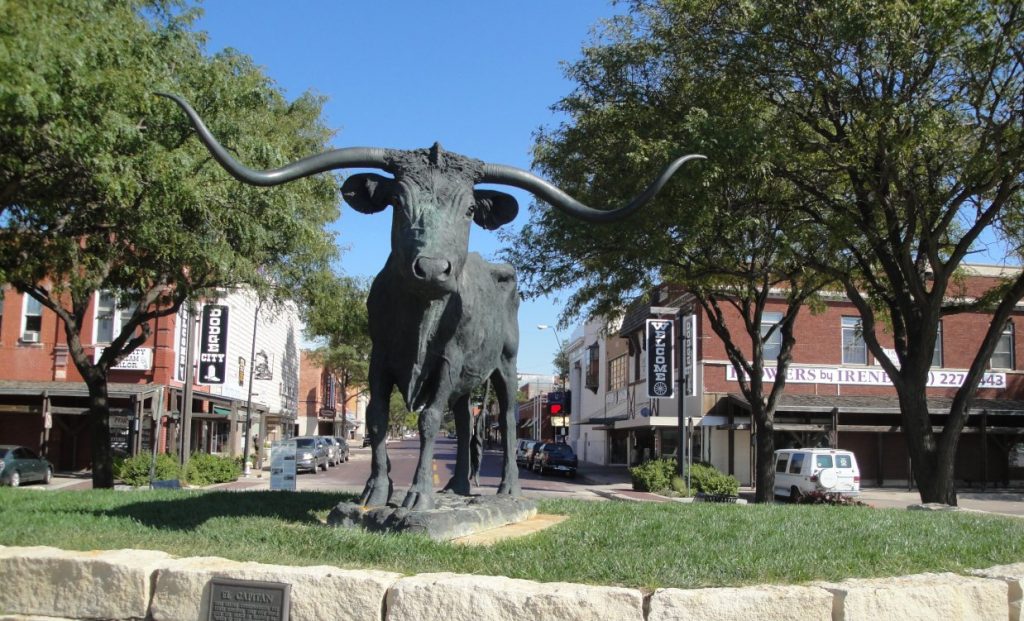
Dodge was the big cattle town for about ten years. It replaced Abilene as the railroads moved west. The cowboys didn’t want to drive the cattle any farther than necessary. It was hard on the men and on the cows. They lost weight and hence value, so they loaded them on rail cars as soon as they could. The whole period of the big cattle drives – the Wild West – was only around twenty years from around 1870-1890. After that, rail transport became widespread enough that the days of the picturesque but dangerous and grueling cattle drives were over.
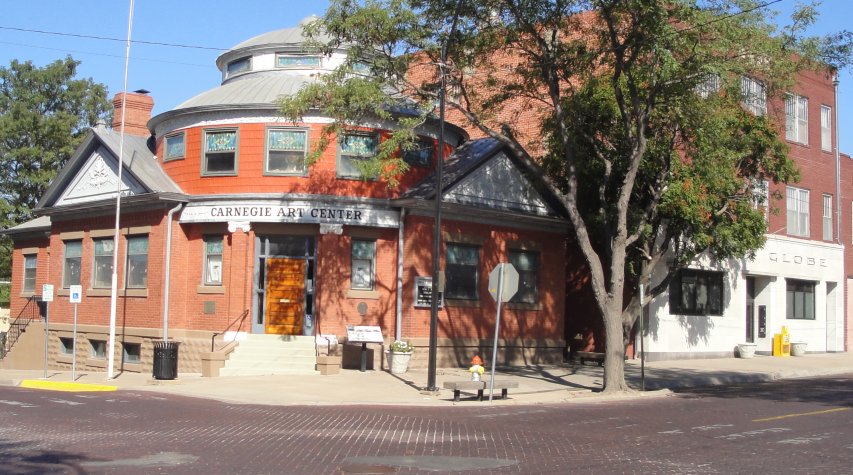
When you think about it, life on the frontier was not much fun. The settlers understood this very well and fact, tried to bring civilization (such as the Carnegie Library, now an art center, pictured above) as fast as they could in order to avoid all the excitement of gunfights and Indian raids. But if you don’t actually have to live through these those sorts of things, they capture the imagination. In the absence of danger, everybody imagines himself the hero. It is exciting in retrospect to have built something up, wrested from hostile nature and dangerous primitive men.
